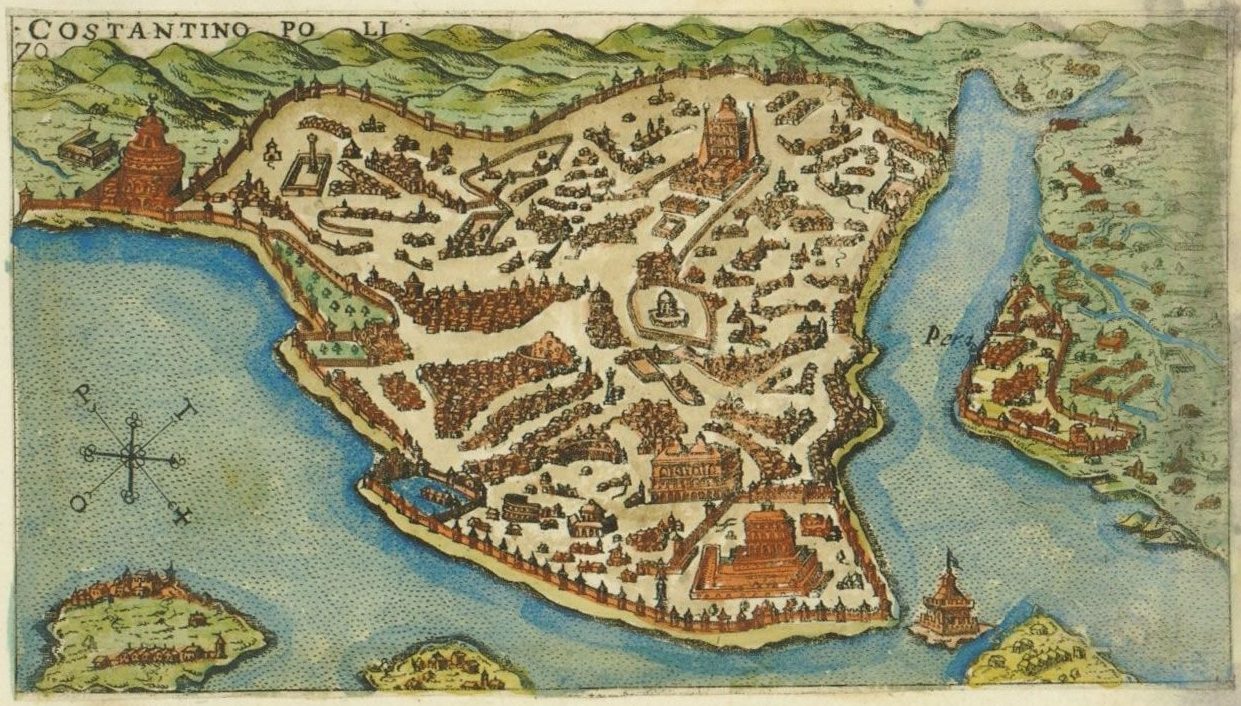The Walls of Constantinople stand as a remarkable testament to the grandeur and strategic importance of the Byzantine Empire. These ancient fortifications, also known as the Theodosian Walls, played a crucial role in protecting the city of Constantinople (now Istanbul) from countless sieges and invasions throughout history. With their impressive size, architectural brilliance, and historical significance, the Walls of Constantinople continue to captivate visitors and remind them of the city’s rich past.
Exploring the Walls of Constantinople
The Walls of Constantinople, constructed during the reign of Emperor Theodosius II in the 5th century, were an engineering marvel of their time. Stretching approximately 6.5 kilometers (4 miles), these fortifications surrounded the city, encompassing the land and sea walls. The Walls of Constantinople were an imposing barrier, standing up to 12 meters (40 feet) tall and boasting towers, gates, and defensive structures strategically positioned along their length.


Defending the Byzantine Empire
The primary purpose of These Walls was to defend the Byzantine Empire’s capital against external threats. Over the centuries, these fortifications successfully thwarted numerous sieges and attacks, including those by various armies, such as the Avars, Persians, Arabs, and Crusaders. The Walls played a vital role in preserving the Byzantine Empire’s power and cultural legacy, making them an integral part of Constantinople’s history.
Architectural Marvels and Gates
These Walls featured several impressive gates that served as entry points to the city. Notable among these were the Golden Gate, which adorned the western entrance, and the Adrianople Gate, guarding the eastern side. These gates were intricately designed and fortified, showcasing the architectural prowess of the Byzantines. Each gate had its unique significance, and they remain as remnants of the city’s past grandeur.


Constantinople: A City of Heritage
These Walls not only provide protection but also shape the urban landscape of the city. The Roman and Byzantine cities within the walls flourished with monumental structures, palaces, and bustling markets. It became a symbol of Byzantine cultural and political influence, leaving a lasting impact on the development of Istanbul today.
Walls of Constantinople Preserving the Legacy
Despite the passing of centuries and various historical events, substantial sections of the Walls of Constantinople have survived, offering a glimpse into the city’s glorious past. Efforts have been made to preserve and restore these ancient fortifications, allowing visitors to experience Byzantine architecture’s grandeur and strategic brilliance firsthand.


Conclusion
These Walls, also known as the Theodosian Walls, are a testament to the Byzantine Empire’s defensive ingenuity and enduring legacy. These ancient fortifications protected Constantinople’s capital city and shaped its history and cultural identity. Today, they serve as a captivating historical attraction, allowing visitors to step back in time and marvel at the architectural brilliance of the Byzantine era.


Walls of Constantinople FAQs:
What are the Walls of Constantinople?
The Walls of Constantinople, also known as the Theodosian Walls, were ancient fortifications surrounding the city of Constantinople (now Istanbul). Built during the reign of Emperor Theodosius II in the 5th century, these walls played a vital role in protecting the Byzantine Empire's capital.
What is the significance of the Walls of Constantinople?
The Walls of Constantinople were of immense strategic importance, defending the city against numerous sieges and invasions throughout history. They preserved the Byzantine Empire's power and cultural heritage and served as a symbol of its grandeur.
What architectural marvels can be found along the Walls of Constantinople?
The Walls of Constantinople featured impressive gates, including the Golden Gate and the Adrianople Gate. These gates showcased Byzantine architectural prowess and served as entry points to the city.
Can the Walls of Constantinople be visited today?
Yes, substantial sections of the Walls of Constantinople have survived to this day. Visitors can explore and admire these ancient fortifications, experiencing the historical and architectural significance of the Byzantine Empire.
What is the connection between the Walls of Constantinople and modern-day Istanbul?
The Walls of Constantinople shaped the city's urban landscape and influenced its development over time. They are a testament to Istanbul's rich historical and cultural heritage, connecting the modern city to its Byzantine past.


0 Comment